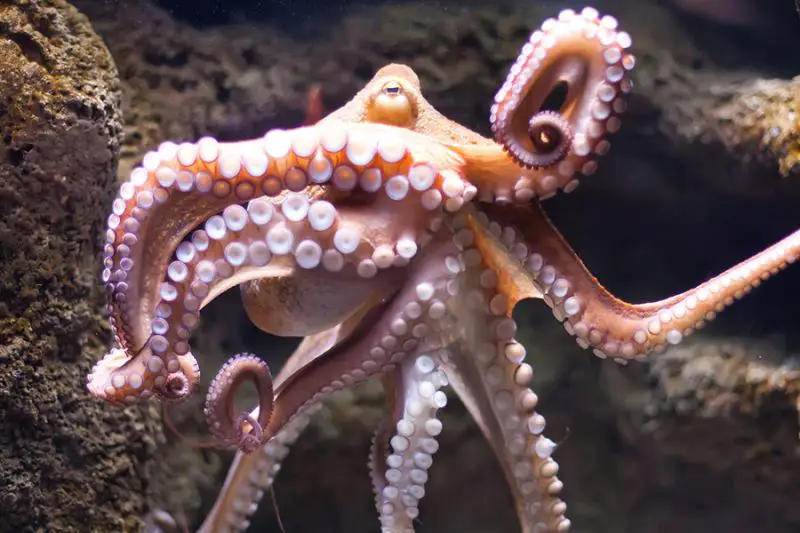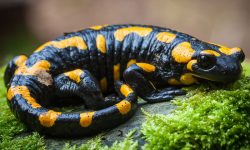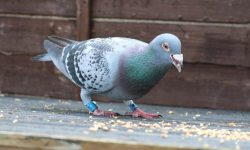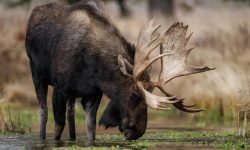Octopuses are among the most fascinating predators in the ocean, known for their intelligence, camouflage abilities and incredibly flexible bodies. Found in coral reefs, rocky coastlines and deep-sea environments, they rely on a highly varied carnivorous diet to fuel their active lifestyles. Understanding what octopuses eat reveals much about the role they play in marine ecosystems, their survival strategies and the complex behaviors they use to hunt.
These animals are opportunistic hunters with excellent vision, sensitive suckers and remarkable problem-solving skills. Some species ambush prey from hiding spots, while others use active pursuit or clever trapping methods. Their beak-like mouths, supported by strong muscles, allow them to break through shells, exoskeletons and tough outer layers that many predators struggle with. Their diet changes based on habitat, size and species, but almost all octopuses rely on small animals found along the seafloor or within crevices.
This guide explores 20 foods octopuses hunt in the wild, offering detailed insights into how they capture, handle and consume prey. Each food item plays a unique role in supporting their energy needs, rapid growth and complex behaviors.
Understanding the Octopus Diet

Octopuses are strict carnivores. Unlike fish that feed on plankton or algae, octopuses eat animals exclusively. Their sharp beaks, paired with venomous saliva, allow them to immobilize prey quickly and break apart tough shells. They also possess thousands of sensitive suckers that detect chemical signals, helping them identify prey hidden under sand or rocks.
Most octopuses are solitary hunters. They rely on camouflage to approach prey undetected, blending with coral, rocks or sand before striking. Their flexible arms wrap around prey, preventing escape while their suckers secure a tight grip. Once captured, the octopus either consumes the prey immediately or returns to a den to eat in safety.
Because octopuses grow rapidly and have short lifespans, many species must consume large amounts of protein-rich foods. Their diet reflects the health of their habitat, making them important indicators of marine ecosystem stability.
20 Foods Octopuses Hunt in the Wild
1. Crabs
Crabs are one of the most preferred prey for octopuses because they offer substantial protein and energy. Octopuses detect crabs by feeling their movement across rocks or sand, using their arms and sensitive suckers to track them down.
Once an octopus locates a crab, it quickly immobilizes it with venomous saliva. The venom relaxes the crab’s muscles, enabling the octopus to break through its shell with ease. This method is highly efficient and reduces the risk of injury from crab claws.
Crabs are particularly important in coastal habitats where they remain abundant year-round, providing a consistent food source for growing octopuses.
2. Shrimp
Shrimp are small, fast-moving prey that octopuses often chase along sandy seafloors or through coral crevices. Their quick reflexes require octopuses to strike precisely and swiftly.
Octopuses typically lunge forward using jet propulsion, extending their arms to trap the shrimp before it has time to dart away. Their suckers hold the shrimp firmly while the beak delivers a quick bite.
Shrimp offer essential nutrients and moisture, playing a major role in the diets of both juvenile and adult octopuses.
3. Clams
Clams live buried in sand or attached to rocks, making them ideal prey for octopuses who search for hidden food. Using their keen sense of touch, octopuses detect clams beneath the seabed.
To open a clam, an octopus may use one of two methods: drilling or forceful prying. Drilling involves using their radula to bore a tiny hole through the shell, delivering venom inside. Prying involves wrapping arms around the clam and pulling the shells apart.
Clams provide rich, slow-digesting protein that helps octopuses maintain steady energy levels.
4. Mussels
Mussels grow in dense clusters on rocks and pilings, making them easy for octopuses to harvest. Their hard shells protect them from many predators, but octopuses excel at opening them.
An octopus may insert its beak between the shells and force them apart, or drill through the shell using its radula. Once opened, mussels offer soft, nutrient-rich tissue that is easy to digest.
In rocky tidepool regions, mussels form a major part of the octopus diet throughout the year.
5. Snails
Snails provide a convenient meal for octopuses, especially in coastal reef areas. Their slow movement makes them easy to catch, allowing even young octopuses to feed on them.
Octopuses drill through snail shells or crack them open by pulling repeatedly with their arms. Their venom helps weaken the snail’s defensive muscle, making extraction easier.
Snails supply valuable minerals and proteins needed for growth and tissue repair.
6. Small Fish
Fish require speed and agility to catch, making them a challenge for many octopuses. However, some species ambush fish by blending into the environment until the prey swims within reach.
An octopus may suddenly burst forward, using its arms to form a net-like barrier that prevents escape. Once enveloped, the fish is bitten and immobilized before consumption.
Fish provide high-quality protein and fats that support octopus mobility and predatory behavior.
7. Hermit Crabs
Hermit crabs are interesting prey because their borrowed shells offer protection. Octopuses detect hermit crabs by feeling the shell or sensing subtle movement.
To extract the crab, an octopus may use suction to pull the soft body out of the shell forcefully. Some species patiently force open the shell by twisting or applying sustained pressure.
Hermit crabs offer high-energy meat, making them valuable in nutrient-poor habitats.
8. Sea Stars
Some octopus species hunt sea stars despite their tough skin and defensive abilities. Octopuses approach from beneath, grabbing arms to prevent escape.
Their strong suckers overpower the sea star’s grip on rocks. The octopus then bites into the soft underside to begin feeding. Venom helps dissolve tissues, simplifying digestion.
Sea stars provide a slow-moving but protein-rich option in rocky habitats.
9. Sea Urchins
Sea urchins are covered in sharp spines, but octopuses handle them with surprising skill. They approach from below, avoiding the spines while manipulating the urchin with their arms.
A quick bite between the plates allows the octopus to access the soft interior. Venom speeds digestion and neutralizes the urchin’s defenses. This tactic requires precise handling and skill.
Sea urchins offer nutrient-dense tissue and are especially valuable in rocky coastal ecosystems.
10. Lobsters
Lobsters are strong, fast and well-armored, making them challenging prey. Larger octopus species, such as the giant Pacific octopus, are powerful enough to capture and overpower lobsters.
An octopus may approach from behind, securing the lobster’s claws first. With its arms wrapped firmly around the body, the octopus injects venom that weakens the lobster quickly.
Though difficult to catch, lobsters offer extremely high nutritional value for large octopuses.
11. Crayfish
Crayfish serve as freshwater equivalents to shrimp and small lobsters, found in river mouths or brackish zones where certain octopus species forage.
Their sharp claws and quick movement require octopuses to approach carefully. Once captured, the octopus disables the crayfish using its venom before consuming it.
Crayfish supply minerals and proteins essential for muscle development and energy.
12. Squid (Smaller Species)
Octopuses occasionally prey on small squid species, especially in deeper waters. Squid move quickly, so octopuses rely on stealth or ambush strategies.
When close enough, the octopus spreads its arms instantly, creating a barrier that traps the squid. A rapid bite delivers immobilizing venom.
Squid provide high-energy food, particularly useful during reproductive seasons or rapid growth phases.
13. Oyster Meat
Though oysters have extremely hard shells, octopuses find ways to access the soft interior. They often target oysters that are slightly open while filtering water.
Using a precise bite, the octopus inserts its beak to stop the shell from closing, then pulls the oyster open with its suckers. Once exposed, the fleshy tissue is consumed quickly.
Oyster meat offers a rich mix of vitamins, minerals and proteins.
14. Amphipods
Amphipods are tiny crustaceans that live among algae, sand and underwater vegetation. Octopuses forage for them by sifting through sediment with their arms.
These small prey items are especially important for baby octopuses learning to hunt. Amphipods are abundant and easy to catch, making them an ideal early food source.
They provide protein and essential fats necessary for early development.
15. Polychaete Worms
Polychaete worms, such as bristle worms, live buried in sand or within coral structures. Octopuses dig into sediment to locate them using chemical cues.
Once uncovered, the worms are grasped quickly and brought to the beak. Their soft bodies offer effortless digestion and are ideal for octopuses needing quick meals.
These worms play a key role in reef ecosystems and supply steady nutrition.
16. Shrimp Larvae
Shrimp larvae drift through the water column, offering easy meals for juvenile octopuses. These larvae are small, soft and abundant during breeding seasons.
Young octopuses often filter or pick them directly from the water while learning hunting techniques. Their fast availability helps fuel rapid growth.
Shrimp larvae provide essential fats, proteins and hydration.
17. Scallops
Scallops can swim short distances using jet propulsion, but octopuses excel at tracking them. Their sensitive suckers detect vibrations created by scallop movements.
To catch a scallop, an octopus may block its escape path with multiple arms before immobilizing it with a bite. The beak then pries the shell open.
Scallops deliver high-energy, nutrient-rich meat that supports active octopus behavior.
18. Small Octopuses
Octopuses sometimes exhibit cannibalism, especially when food is scarce or territories overlap. Larger individuals may prey on smaller or weaker octopuses.
This behavior occurs mainly in dense habitats like reefs or seagrass beds. The attacker typically ambushes the smaller octopus, capturing it quickly to avoid struggle.
Though not common, this food source offers a high concentration of nutrients.
19. Krill
Krill consist of small crustaceans found in schools throughout coastal and open-ocean environments. For octopuses living near productive waters, krill provide steady meals.
Octopuses capture krill by sweeping their arms through the water or trapping clusters against rocks. Krill are high in omega fats and proteins.
This prey becomes more essential when larger crustaceans are scarce.
20. Fish Eggs
During spawning seasons, fish eggs appear in large clusters on rocks, coral or vegetation. Octopuses raid these nests for easy, nutrient-rich food.
The eggs are soft, digestible and packed with lipids that support energy needs. Their abundance allows octopuses to feed quickly without expending much effort.
Fish eggs are especially important for breeding females requiring intense nourishment.
FAQs About What Do Octopus Eat
Are octopuses carnivores?
Yes. They eat only animal-based foods.
Do octopuses eat fish?
Yes, though they prefer crustaceans and slow-moving prey.
How do octopuses open shells?
Using their strong beaks, suckers or by drilling small holes.
Do all octopuses use venom?
Most species use venom to immobilize prey.
What do baby octopuses eat?
Small crustaceans, larvae, amphipods and worms.
Do octopuses eat plants?
No. They are strictly carnivorous.
How often do octopuses eat?
They eat frequently due to fast metabolism.
Do octopuses hunt at night?
Many species are nocturnal hunters.
Do octopuses store food?
Some hide leftovers in dens.
How large is a typical meal?
It varies, but octopuses often eat prey equal to a significant portion of their body weight.
Final Thoughts
Octopuses are extraordinary hunters whose diets reveal the complexity of their behaviors and ecosystems. By consuming crabs, shrimp, fish, shellfish and many other marine creatures, they shape food webs and help maintain balance in ocean environments. Understanding what octopuses eat provides insight into their intelligence, adaptability and importance in marine ecosystems. Their feeding habits reflect not only survival instincts but also remarkable problem-solving abilities that make them some of the ocean’s most intriguing animals.






